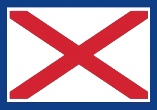NORMAN (2) was built in 1894 by Harland & Wolff at Belfast with a tonnage of 7537grt, a length of 507ft, a beam of 53ft 2in and a service speed of 17.5 knots.
She was the first of many ships built by Harland & Wolff for Union-Castle and, at the time, the largest ship on the Cape Town mail run.
In 1895, she grounded near Port Shepstone with slight damage, and the master (Capt W Bainbridge) was stripped of his command.
She was built to Admiralty troopship specifications and was requisition for use during the Boer War in November 1899.
In 1900 she was transferred to Union-Castle following the merge whilst still on troopship duties.
She was refitted in 1904 and subsequently worked as a mail ship until 1910 when, after being replaced by the Balmoral Castle, she was laid up at Netley in Southampton Water.
At the outbreak of the First World War in 1914 she was recommissioned as a troopship for a short while before reverting to the mail run. During this time she was part of the first convoy to take men of the British Expeditionary Force to France. 1918 saw her on troopship duties again, this time in the Mediterranean..
In May 1919 she was chartered to P&O for one voyage to Australia before returning to the mail run.
On 10 June 1907 the Eastern Province Herald reported that an unusual mail delivery had been made at sea on 25 April when the RMS Norman overtook the Union Castle SS Galeka in mid-Atlantic and dropped a barrel overboard containing letters for the latter's passengers. The innovation is said to have been appreciated by the passengers of the two boats who interchanged cheers while the Norman's band played "Auld Lang Syne"
She was replaced by the Arundel Castle in 1921 and transferred to the intermediate service and in 1923 she was deployed on the Round Africa service, out via Suez and home via the Cape.
In 1925 she was replaced by the Llandovery Castle on the Round Africa service, laid up in the River Blackwater off Tollesbury and broken up in 1926.
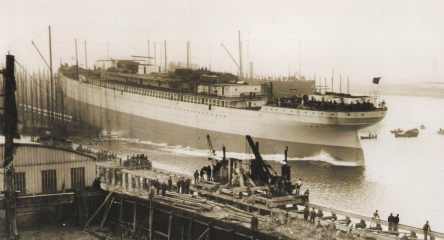
Launched at Belfast
19 July 1894
THE SKETCH
Nov. 21, 1894
A NEW STEAMSHIP: THE NORMAN.
Every addition to British steamers is of interest to those who have had experience of travelling by them — as who has not? — and to those who look forward to such a pleasure. Just lately the Union Steamship Company has added the Norman to its already important fleet, and it is now making its first voyage to South Africa, having started on Nov. 10. Both at Belfast and Southampton large numbers of guests have had an opportunity of testing the capabilities of the new steamship.
She was built by Messrs. Harland and Wolff, the famous Belfast firm, and is the largest of the Union fleet, as is appropriate to a vessel which hails from the largest works of their kind in the world. From beginning to end everything connected with a first-class liner is made by Messrs. Harland and Wolff, if one excepts the pretty stained-glass employed in some of the windows, The Norman is 490 ft. in length between perpendiculars, 53 ft. broad, and 373 ft. deep; her gross tonnage is 7392. She is fitted with two sets of triple-expansion engines, capable of developing 7000-horse power.
It may be mentioned that one-tenth of the iron steamship tonnage of the United Kingdom is now turned out from the yard of Messrs. Hariand and Wolff, who can proudly claim to employ 8000 hands.
At the banquet given at Belfast a good deal of mention was made of the development of trade in connection with South Africa, and probably the Union Steamship Company will have to add very soon successors to the Norman.
The main saloon is specially handsome: it is panelled in light wainscot-oak, and the electric light shows off all the tasteful decoration of the room to great advantage. The library is another handsome apartment, furnished with Chippendale mahogany, and surmounted with a dome of stained-glass in satin-wood framework. On its electric-blue seats the passenger who could not find rest and refreshment reading one of the books from its well-stacked library would indeed be hard to please. A special feature in connection with the drawing-room and library is the complete set of refrigerating apparatus, which cannot fail to be a comfort and an aid to health in passing through the Tropics.
Then one must sing the praises of the smoke-room, admirably adapted to the delight and satisfaction of every devotee of "My Lady Nicotine.” Electricity supplies that very constant necessity, a match, by furnishing an incandescent glow from the pressure of a button, which effectively does the work without the slightest risk of setting fire to the room.
There are three promenade decks on the Norman, two of which are entirely free from any boats or working-gear which might impede the walker. They run nearly the whole length of the ship. and each of them is protected from the sometimes stormy elements by the planks of the deck above. So that he or she who is ordered by the physician to have as much walking exercise as possible can become amateur Westons in pedestrianism en route for the Cape.
The command of the Norman has been placed in the hands of Captain Bainbridge, who is the senior captain of the Union Steamship Company.
A special train, on the London and South Western Railway, conveyed about three hundred ladies and gentlemen to Southampton Docks, where they embarked on board the Norman and enjoyed a trial trip in the Solent, during which the Norman steamed from fifteen to seventeen knots.
On the occasion of a second trip the London visitors included a large number of leading merchants, whose business connections lead them to take a special interest in South Africa, At the luncheon, which was served on board, presided over by Mr. Alfred Giles, the Chairman of the Company, the Chairman mentioned that, whereas the Union Steamship Company was only capable of carrying five hundred passengers a year in 1857, it was now capable of accommodating 30,000 passengers a year. Mr. Giles, who formerly represented Southampton in Parliament, also spoke of the success which had attended that port since its connection with the South African liners. Anyone who has witnessed the crowds assembling at Waterloo Station to journey by special train to Southampton, and thence to the Cape, will endorse Mr. Giles’s statement as to the popularity of the London and South Western Railway Company.
Mr. Rhodes’s arrival in this country will probably result in still more attention being paid to South Africa as a hopeful and healthy resort for emigrants.
Several other interesting comparisons between the past and the present were made by subsequent speakers, and, as to the future, we can only conclude with hearty congratulations to the company on their latest achievement, and best wishes for success in the future, which so vitally affects the commerce of the world and the strengthening of that “crimson thread of kinship,” which it behoves all statesmen to regard.
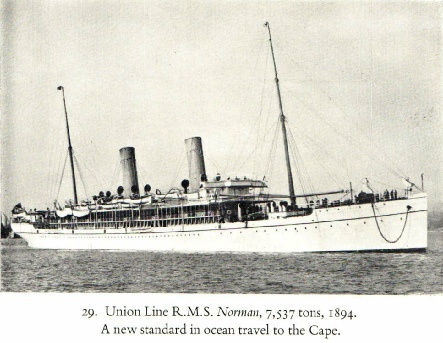

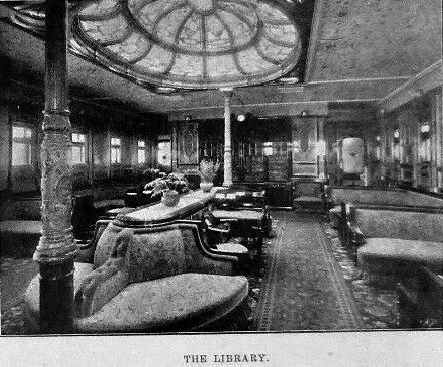
Entry into Service - 1894

Water Colour
Artist Unknown
Norman - Art Gallery

Ship’s Officers - 1896
The Ship’s Officers in 1897
The Master (3rd from right centre row) is Capt G M Molony
Service in The Boer War - 1899 to 1902
Regiment |
Sailed
|
Arrived
|
|
Lancashire Fusiliers - 2nd Battalion
|
2 December from Southampton
|
19 December at Cape Town
|
A Missionary’s Tale - 1923
Received from Martha Lambrechts - February 2022
My uncle, who was a missionary, wrote a diary on his first mission to Uganda in 1923. In 2019 I published a book about his life, including the diary he wrote the first two years.
Herewith I send you the (translated) part when he set foot on steamship Norman of the Union-Castle Line.
Disappointment
On 5 December 1923 we left Mill Hill at about 10 in the morning, an all cheerfulness; some father from The Mother House came to the station to say goodbye one last time as we left for the land of our ideals. We left with 5 priests and 3 sisters and later in London another layman came to work with us as a carpenter in the mission. At about 12 o’clock we left London from St Pancras station; some former parishioners and friends had come to the station, very kind of them. I forget what time we got to Tilbury, I think it was about 2 pm.
First we boarded a tender or lighter that took us to the ship in the middle of the river. Here I got a big disappointment; I had once seen an advertisement for the Union-Castle Line Steamships and imagined that this would be a giant ship, that everything was beautiful and comfortable, that space and convenience abounded; but none of that. The ship is 7596 tons and looks nice in a photo, but in reality it is not much special. I also heard that they wanted to sell the ship but that they cannot find a buyer for it.
The only nice thing about the ship is the First Class Salon, which although not beautiful, is neat. The ship also has one major flaw, that the length is too large in relation to the width. The ship, which is 29 years old, was originally built for speed and could then run at 18 knots. Now she runs an average of only 13 knots. This too small width causes the ship to swing too easily. This is not a problem for people who are used to the sea, but for those who are not, a great inconvenience. Furthermore, the cabins are very small and have poor ventilation. Now that is not very important for the first part of the journey because the weather is cold, but I fear it will be a source of unbearable heat when we get to the tropics.
The cabin, which is occupied by Fr. Walser, an Austrian of 1.6m, a male with a long patriarchal beard, by a layman and by me, is about 2.7m long, 1.8m wide and 2.2m high. The three of us have to sleep in it. Fr. Walser lies below, the layman lies in a bed above, on the other side I sleep. Between these beds is a small cupboard and on each side a folding washing set. Under the beds are some of our small suitcases and on the wall above my bed the clothes hang on coat racks. The space in which we undress and wash is about 1.5m. There is certainly room enough to turn around, but not all three at the same time. When we wash in the morning, we do it one after the other, because on of the washing sets seems to be defective. But we’ll get it done anyway.
|
Intermediate Service
|
Norman
Left London
3 December
For Durban via East Africa
|
|
Master
|
W M Betts
|
|
Chief Officer
|
J S James
|
|
Second Officer
|
H C Bergen
|
|
Extra Second Officer
|
H S Sorenson
|
|
Third Officer
|
F Norfolk
|
|
Fourth Officer
|
P A Hodgson
|
|
Chief Engineer
|
W Sim
|
|
Second Engineer
|
D Barr
|
|
Third Engineer
|
J Sim
|
|
Fourth Engineer
|
C Looker
|
|
Surgeon
|
A F Heaton
|
|
Purser
|
V H Llewellyn
|
|
Chief Steward
|
W Adams
|
We read Holy Mass every morning and of course I am very happy about that. One of us reads Mass in the Library where we set up a table as an altar. Everyone else reads in the cabins and makes an altar on the small cupboard in the cabin. Everything is small and very easy to operate. The Good Lord will be fine with that, there is no other option. As long as it doesn’t get too hot in the Red Sea, because if we then have to read Mass in the cabin, we can’t stand it, and there’s no opportunity anywhere else on the ship. We are only allowed to use the Library for half an hour a day because it is too much work to clean in the morning. Because in addition to being a library, it is also a smoking lounge. The servants have their hands full in the morning. Sunday there is also a religious service of the Protestants; I believe that the captain of the ship then acts as a vicar. Of course we don’t get to it.
The first Sunday our Holy Mass was attended by the 3 sisters, of course, by the layman and further by 3 gentlemen and 2 ladies. I hope there will be more next time, because there are more than 10 Catholics on board, among the passengers.
Seasickness
Then to return to the day of departure, on 5 December 1923 we departed from Tilbury at about 6.30 pm. The ship left without us noticing. It was not calm weather but very dark. Only in the distance we could see the beacons and the lights of the houses. The first night on board is never the most enjoyable; the ship trembles as a result of the working of the machines, even if the ship does not move, yet one lies in bed trembling. I therefore did not sleep pleasantly, but one gets used to everything and the shaking of the ship no longer makes an impression on the nerves.
6 December. We are already out of sight of the coast, the sea is calm and luckily I don’t suffer from seasickness. Life on board is boring. We are all strange to each other. On request, the steward has seated us nine at one table for meals, so we have a nice club; of course we are not as loud as the rest but we are priests and sisters.
In the evening when we go to bed I am very sleepy, but I was kept awake by a screaming child in the cabin next to us, not enjoyable, but what can people do about it?
7 December. We arrive at the Bay of Biscay at 3 in the morning. The weather gradually becomes windier and when we woke up in the morning the ship was already rocking quite a bit. This got worse during the day and our ship started to dance like a rocking horse. There were a lot of people who got seasick. They were seen sitting on deck with white gloomy faces which showed that the stomach was far from well; by the time of dinner it had gotten so bad that hardly anyone appeared at the table. There was only one full table and that was ours. Not that we were free from turmoil in the stomach, far from it. Fr Walser had already hung overboard beforehand, Fr Doyle also looked like a wet dishcloth, Sr Jacoba and Sr Mildred were also far from good. Fr Brennan and Fr Hernig and Sr Raphael didn’t seem to be in the least bothered. I had held up well, then I was a bit worse again and I believe that I didn’t turn pale. Nevertheless we all appeared at the table at 7 o’clock. But when we had only eaten a little, Fr Walser left the salon. Whether this worked on my stomach too, or whether it was the ship’s wobble, I soon went after him; What I had eaten I gave to the fish. Immediately I felt much better; I think the stomach had been a bit bothered all day, but now she was fine. So I returned to the meal, and had a good dinner, without further mishaps.
After dinner I went for a walk on the deck to get used to the movements of the ship, something I had done already that day without much trouble. This time, however, it was good that I did it, for after a quarter of an hour I hung my head over the railing again and paid my tax to Her Majesty the Sea. But now I was through it immediately, at night I slept well and in the morning the sea was slightly better and gradually became calmer as we got closer to Spain. At noon we could see Cape Finistere in the distance rising in the mist. I think many passengers were really happy because the Bay of Biscay has a bad reputation as the weather is often rough. I hadn’t been a storm, but the sea was quite high.
Now we sailed along the coast of Spain and Portugal. Towards the evening the wind picked up again and we had a small accident that night. I believe I had forgotten to close the windows, which provide ventilation to the row of cabins to which ours belong. There seemed to be quite a high sea, and it just so happened that wave came in. I had just woken up so it didn’t scare me much. But Fr. Brennan, who was fast asleep, he said, did not immediately know what was happening and at first thought the ship had capsized when he had such a wave of water over his face. He even gave a few shouts, but was soon reassured when no more water came and he saw that his colleagues, who were in bed on the other side of the cabin, were sleeping peacefully.
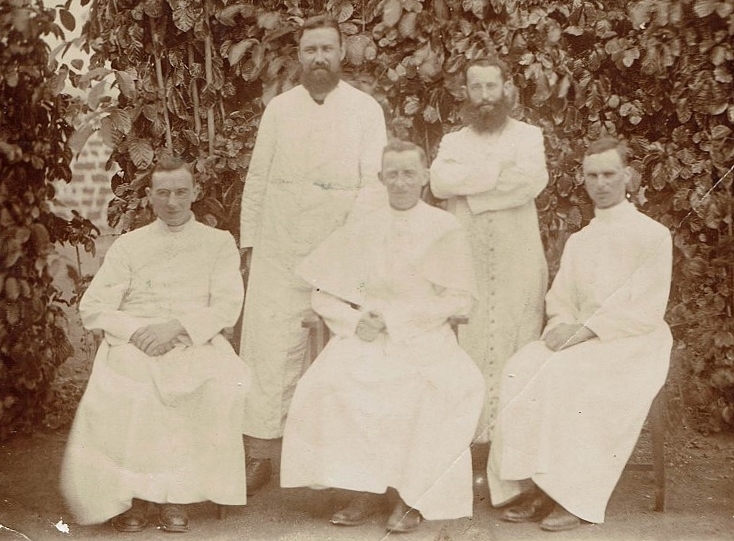
|
Master
|
From
|
To
|
|
W Bainbridge
|
10/1894
|
8/1895
|
|
G M Molony
|
1895
|
1897
|
|
R Reynolds
|
10/1897
|
4/1902
|
|
R Rendall
|
9/1900
|
|
|
G K Gandy
|
12/1900
|
|
|
J Rose
|
1902
|
|
|
S C Brown
|
5/1902
|
6/1906
|
|
R E Becher
|
10/1905
|
12/1905
|
|
J L Stanistreet
|
7/1906
|
6/1907
|
|
T J Bremner
|
6/1907
|
6/1910
|
|
J L Stanistreet
|
7/1910
|
12/1910
|
|
Laid up
|
5/1911
|
5/1913
|
|
T C Clinock
|
6/1913
|
4/1914
|
|
Laid up
|
5/1914
|
8/1914
|
|
J W Hague
|
9/1914
|
12/1914
|
|
T C Clinock
|
11/1914
|
3/1915
|
|
J W Hague
|
8/1915
|
6/1916
|
|
A Knight
|
6/1916
|
2/1917
|
|
N R Neilson
|
2/1917
|
10/1917
|
|
J Culverwell
|
10/1917
|
1/1920
|
|
E W Day
|
1/1920
|
8/1920
|
|
J George
|
9/1920
|
6/1921
|
|
J B Whitton
|
6/1921
|
9/1921
|
|
L A Millard
|
9/1921
|
1/1922
|
|
D Samuel
|
3/1922
|
5/1922
|
|
W F Stanley
|
7/1922
|
9/1922
|
|
W Morton-Betts
|
6/1925
|
8/1925
|
|
J Attwood
|
10/1925
|
12/1925
|
|
Laid up
|
12/1925
|
3/1926
|

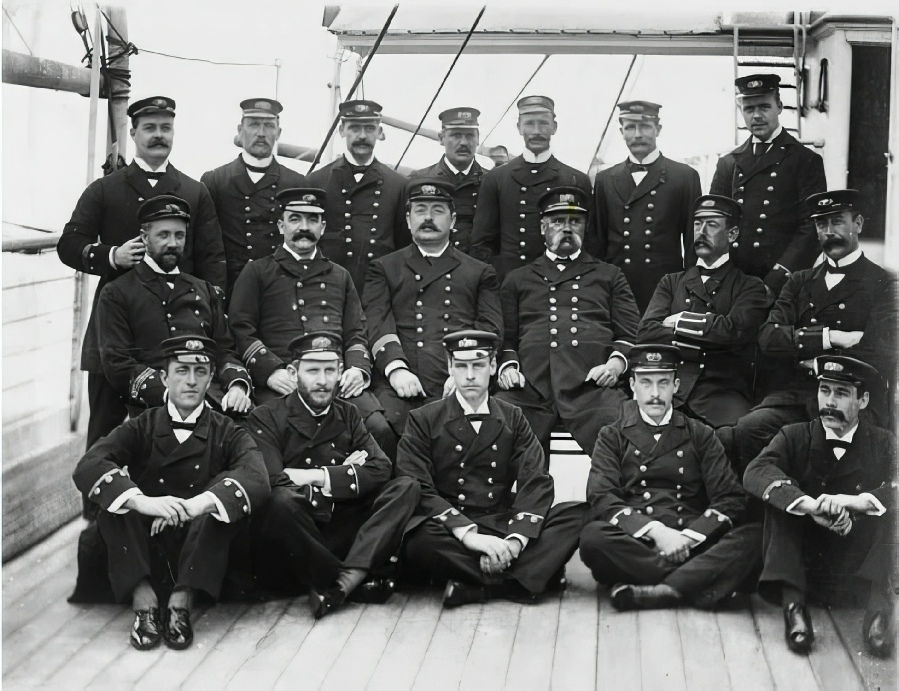
Career Summary
Vessel |
Built
|
Tonnage
|
Official No
|
Ship Builder
|
Engine Builder
|
Engine Type
|
HP
|
Screws
|
Speed
|
|
Norman (2)
|
1894
|
7537
|
104042
|
Harland & Wolff
Belfast
|
2 x Triple Expansion Steam
|
9000 IHP
|
2
|
17.5
|
General Arrangement Plans

